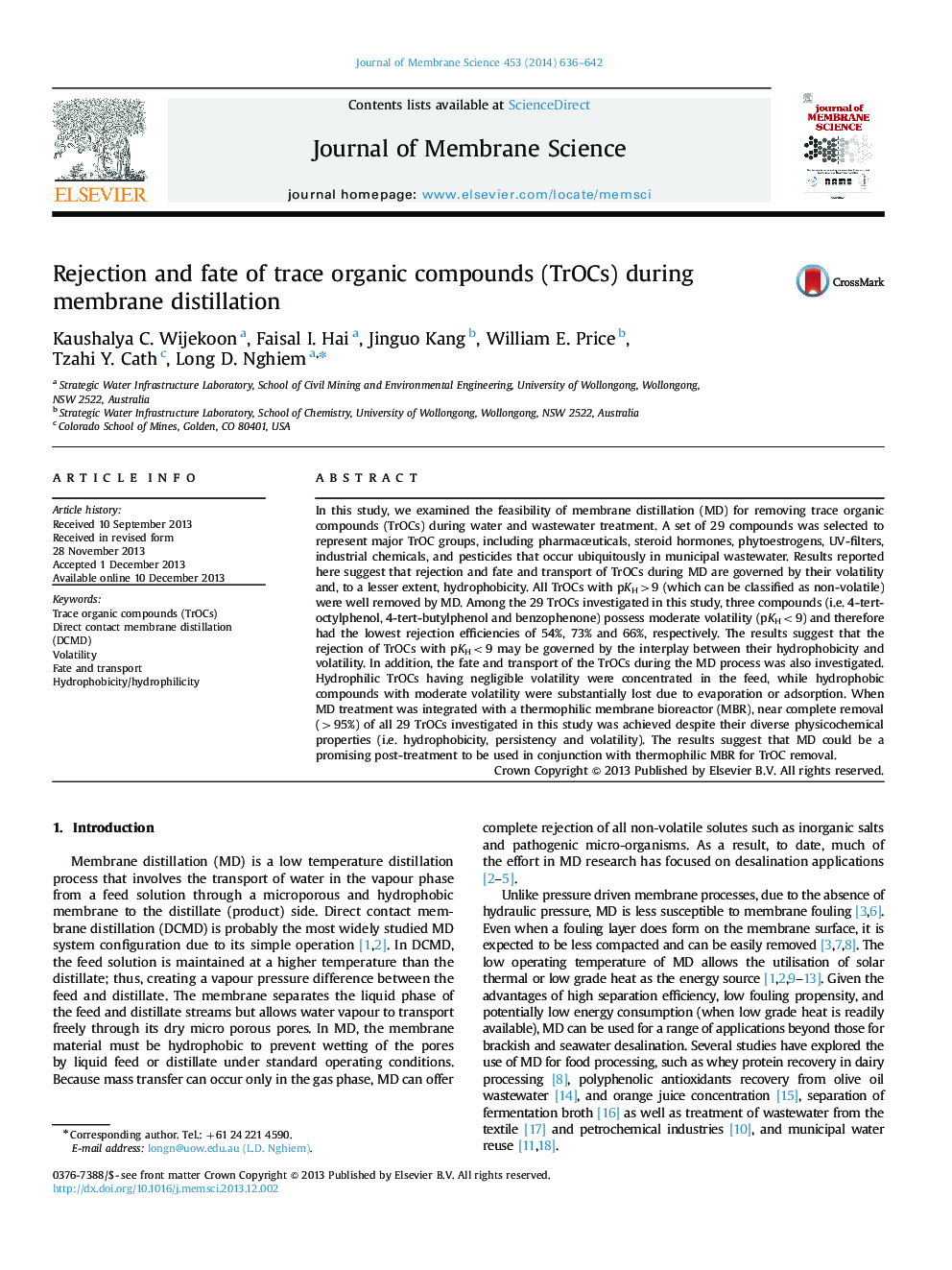| کد مقاله | کد نشریه | سال انتشار | مقاله انگلیسی | نسخه تمام متن |
|---|---|---|---|---|
| 633817 | 1456046 | 2014 | 7 صفحه PDF | دانلود رایگان |

• TrOC rejection by MD is mainly governed by the volatility of the compound.
• Hydrophobicity can affect the rejection of moderately volatile TrOCs by MD.
• The fate of TrOCs during MD is governed by their volatility and hydrophobicity.
• The integration of MBR and MD results in near complete removal of all TrOCs.
In this study, we examined the feasibility of membrane distillation (MD) for removing trace organic compounds (TrOCs) during water and wastewater treatment. A set of 29 compounds was selected to represent major TrOC groups, including pharmaceuticals, steroid hormones, phytoestrogens, UV-filters, industrial chemicals, and pesticides that occur ubiquitously in municipal wastewater. Results reported here suggest that rejection and fate and transport of TrOCs during MD are governed by their volatility and, to a lesser extent, hydrophobicity. All TrOCs with pKH>9 (which can be classified as non-volatile) were well removed by MD. Among the 29 TrOCs investigated in this study, three compounds (i.e. 4-tert-octylphenol, 4-tert-butylphenol and benzophenone) possess moderate volatility (pKH<9) and therefore had the lowest rejection efficiencies of 54%, 73% and 66%, respectively. The results suggest that the rejection of TrOCs with pKH<9 may be governed by the interplay between their hydrophobicity and volatility. In addition, the fate and transport of the TrOCs during the MD process was also investigated. Hydrophilic TrOCs having negligible volatility were concentrated in the feed, while hydrophobic compounds with moderate volatility were substantially lost due to evaporation or adsorption. When MD treatment was integrated with a thermophilic membrane bioreactor (MBR), near complete removal (>95%) of all 29 TrOCs investigated in this study was achieved despite their diverse physicochemical properties (i.e. hydrophobicity, persistency and volatility). The results suggest that MD could be a promising post-treatment to be used in conjunction with thermophilic MBR for TrOC removal.
Journal: Journal of Membrane Science - Volume 453, 1 March 2014, Pages 636–642